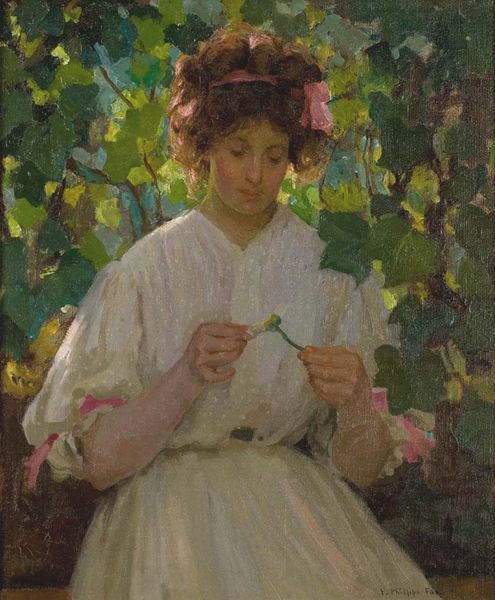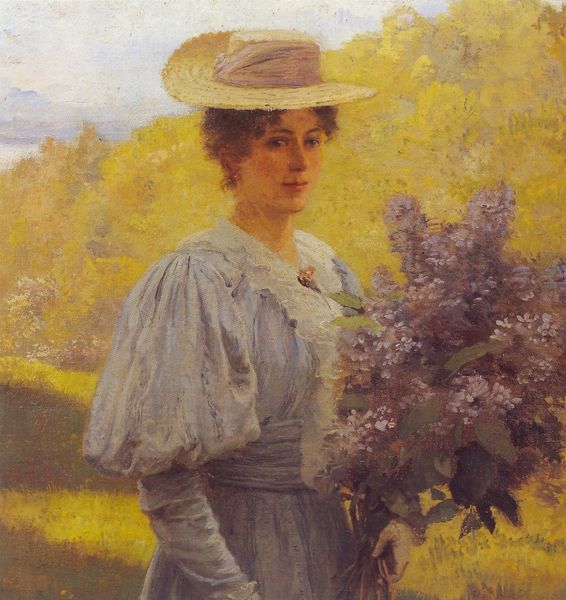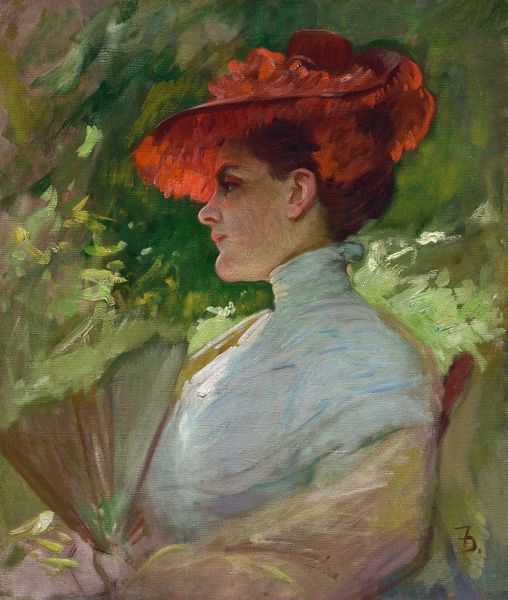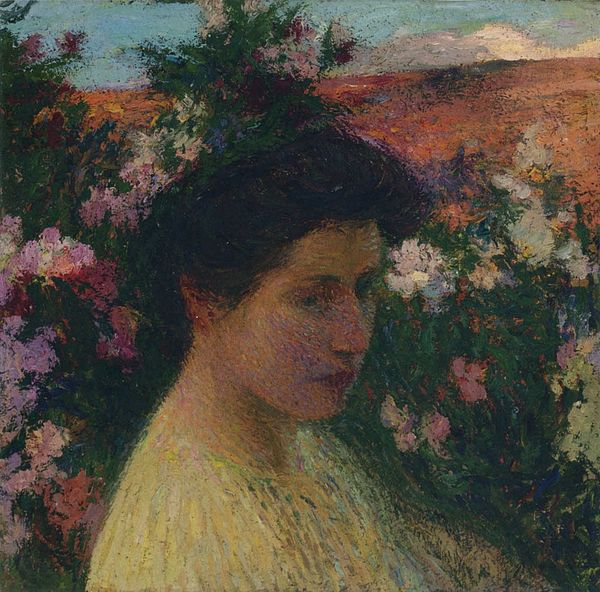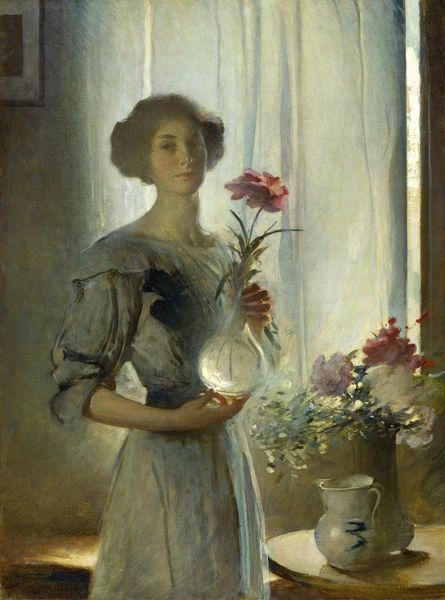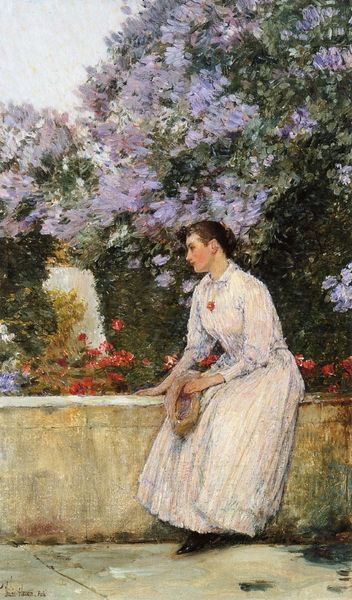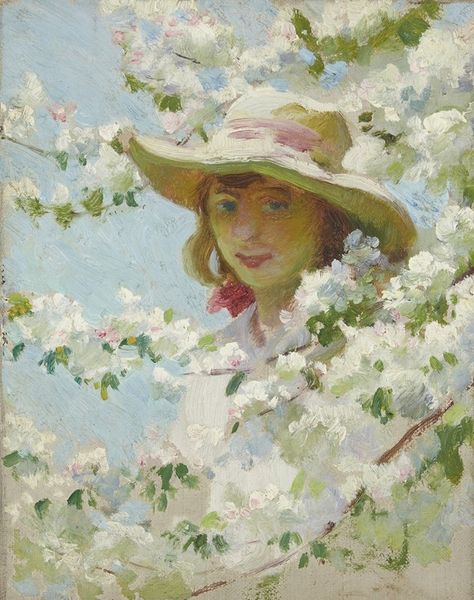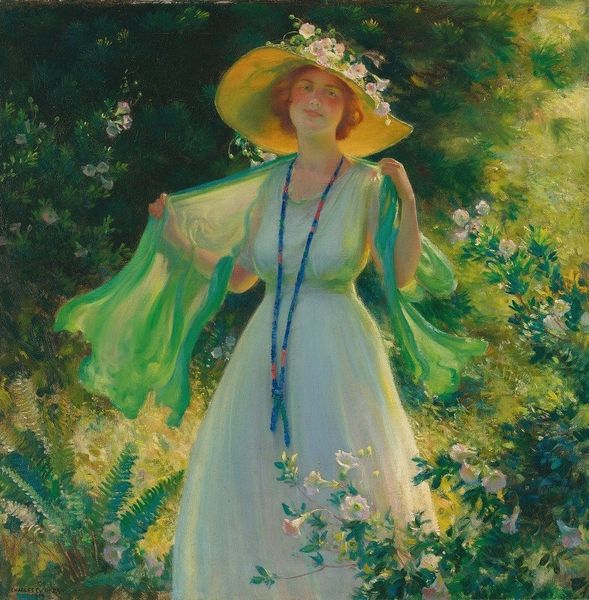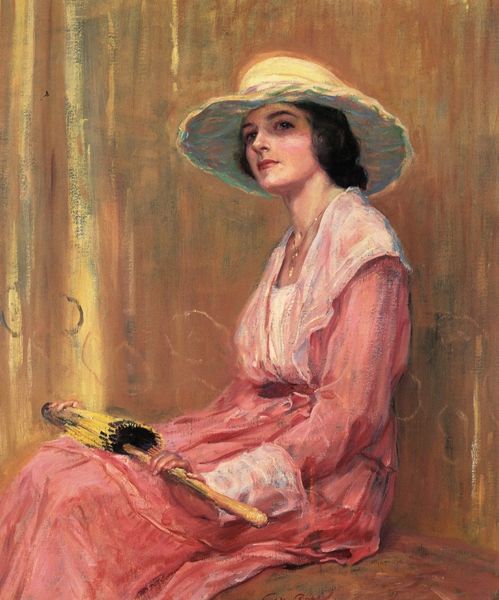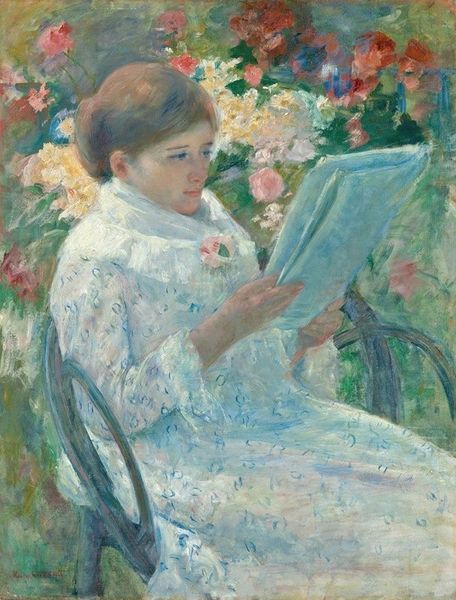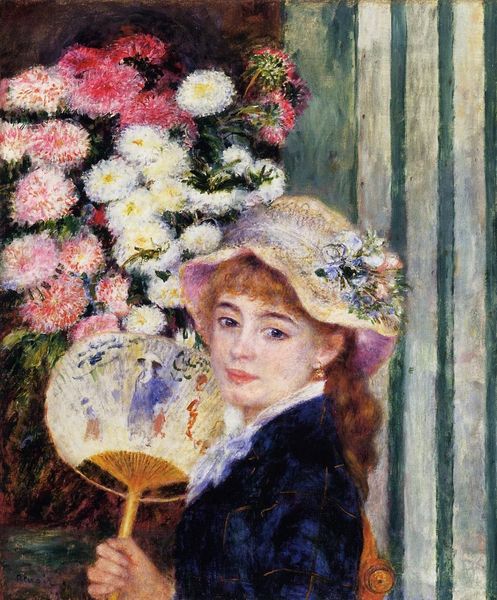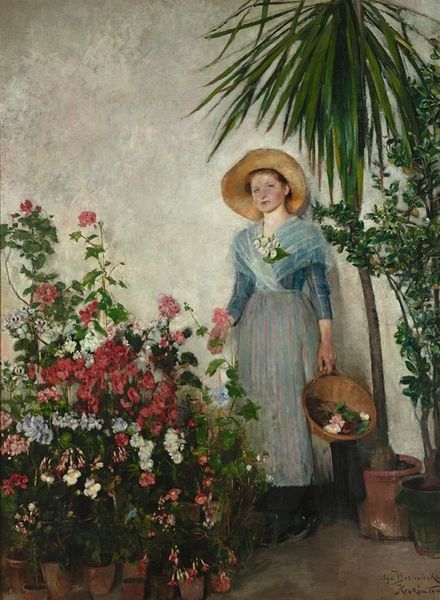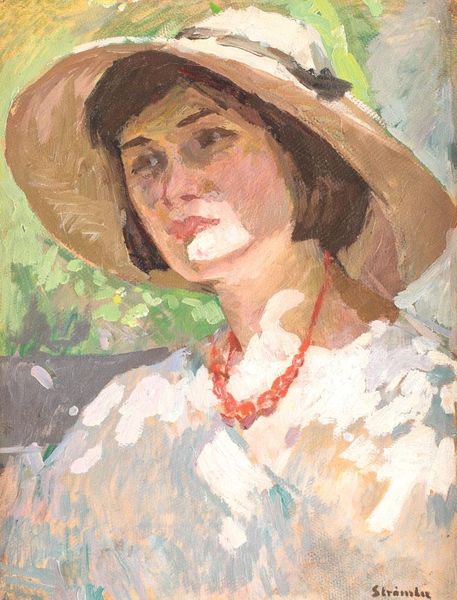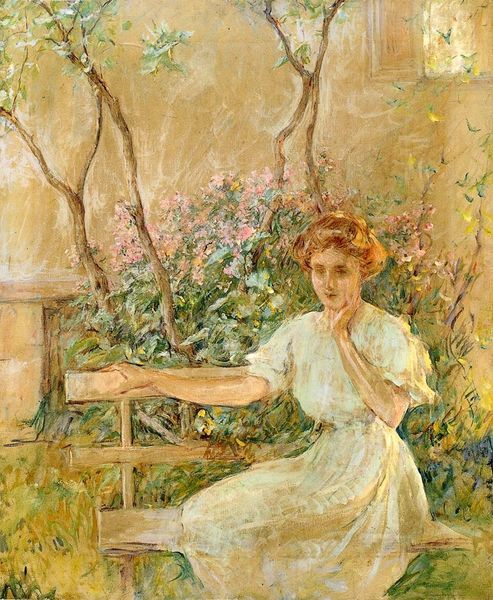
Copyright: Georgina de Albuquerque,Fair Use
Editor: Georgina de Albuquerque's "Primavera," created in 1926 with oil paints, immediately struck me. The soft brushstrokes and light palette evoke such a peaceful feeling, almost like a daydream. What symbols or cultural ideas do you see interwoven in this piece? Curator: It's fascinating how de Albuquerque captures this sense of blossoming – not just of the flowers, but also perhaps of the woman herself. Think about "Primavera" as Springtime in Italian; its a concept deeply intertwined with renewal, youth, and femininity. Note the woman’s gaze. Where do you think she's looking? What does that tell you? Editor: She’s looking off to the side, almost dreamily, rather than directly at the viewer. Is she meant to embody a sort of…allegory of Spring? Curator: Exactly! Her dreamy gaze invites us to consider her inner world, that burgeoning sense of self. Her interaction with the flowers becomes more symbolic. Is she tending them, or is she identifying with their delicate beauty and potential? The hat shields her eyes, creating shadow and mystery, as she engages the symbols of fecundity and innocence. Editor: So, beyond just a pretty portrait, it's layered with cultural meanings related to youth and growth… almost as if the painting itself is meant to evoke the feelings of springtime. Curator: Precisely. The cultural memory of Spring—its association with new beginnings, rebirth, and feminine ideals—is carried visually in de Albuquerque’s brushstrokes. And it continues to resonate with us today. Editor: I never considered how much symbolism could be packed into something seemingly so simple. Thanks!
Comments
No comments
Be the first to comment and join the conversation on the ultimate creative platform.
